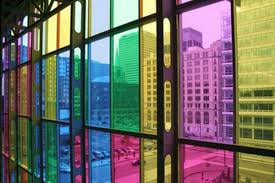MICA, BULL BUBBLE, AND GLASS RAINBOW
The Chinese used
thin horn plates instead of a windowpane. In Russia, a film of a bull bubble or
mica was used. Mica is a soft layered mineral. It easily exfoliates into the
thinnest sheets. They were inserted into metal frames with many light bindings.
 |
| First Windows |
But even mica,
which is more transparent than waxed canvas or paper, is a poor substitute for
glass. Cracks appear in it from the sun and wind. It splits into even smaller
sheets, becomes cloudy, becomes like a tin, poorly retains heat and does not
let light through much.
In ancient
Russian houses (even tsar’s mansions) there was twilight and it was just as
cold and uncomfortable as in medieval castles in Europe.
Sometimes mica
windows were painted with transparent colors. Such painted windows are
preserved in the rooms where Tsar Peter the Great spent his childhood in
Moscow.
This was done in
imitation of colored glass windows, which had already begun to come into
fashion...
In childhood,
each of us had his own favorite game. Someone was interested in cars, someone
built palaces from cubes, and someone liked to look at the world through
multi-colored glass. You look through the red glass - and the world seems to be
flooded with some kind of alarming glow. And in blue - everything instantly
changes, as if night had come, but not ordinary, but mysterious, fabulous...
 |
| Colored Window Panes |
Imagine that the
windows of your room are not colorless glasses, but a whole collection of
colored ones. You wake up in the morning, and spots of blue, green, red, purple
light fall from the window...
Now
it’s rare to see such windows in residential buildings. But in the sixteenth
and seventeenth centuries in Germany, France, Italy, houses with colorful
glasses were common.